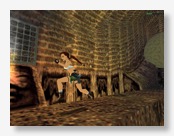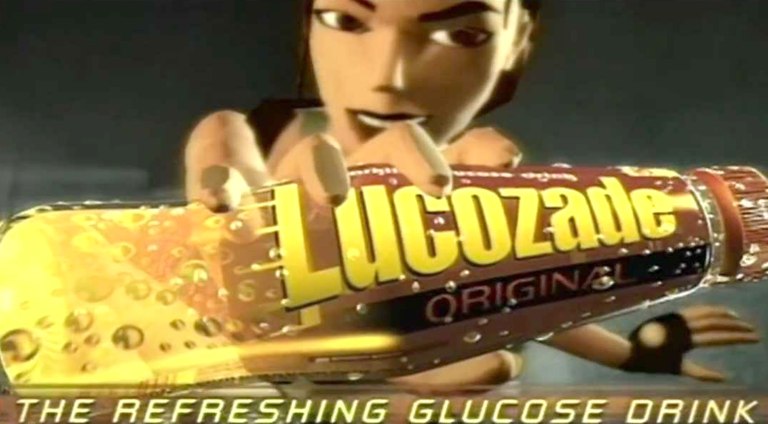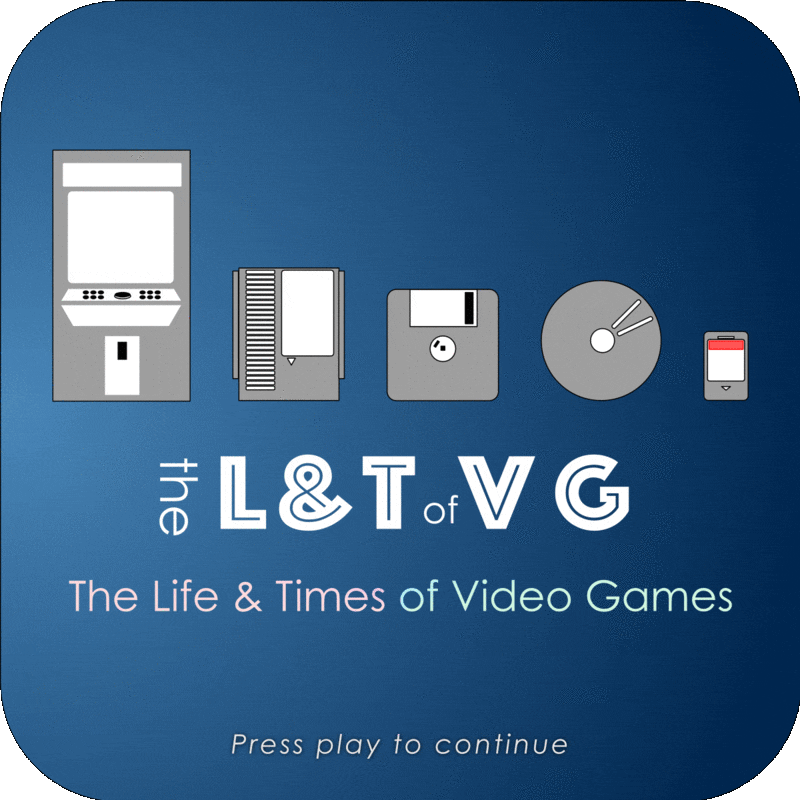8 - The Tomb Raider grid (part 2)

Continuing the story from Part 1, this is how the original Tomb Raider's grid-based engine/level editor impacted on the series, on Lara Croft's rise to fame, and on the shifting sands of blockbuster game development. This episode also discusses the place that such a grid system has — or might have — in game design today. Featuring input from former Core Design artists and level designers Heather Stevens and Andy Sandham as well as programmer Gavin Rummery.
Related links:
- The Tomb Raider Grid (part 1)
- "It felt like robbery": Tomb Raider and the fall of Core Design, my article for Ars Technica
- Raiding the Fan-Made Tombs of Lara Croft, my article for Rock Paper Shotgun on the level editing community
- Video of 20th anniversary panel at Play Expo 2016, organised by Ash Kaprielov and featuring several people who worked on the series (including Heather and Gavin)
- TRLE.net, the central hub of the custom levels community
- Level Editing Forum, discussion boards for the custom levels community (lots of cool projects ongoing)
- Tomb Raider 1 for iOS (I get a small cut of the sale price if you buy via this link)
- Tomb Raider 2 for iOS (likewise)
- My affiliate link to buy Rise of the Tomb Raider on Amazon — Xbox One, PS4
- My affiliate link for to a Tomb Raider video game search on Amazon
Music credits:
- Selected portions of the original soundtracks from Tomb Raider 1 and Tomb Raider 2, composed by Nathan McCree
- And everything else is my own work.
(Partial) Transcript
Gavin Rummery: I love games like Uncharted and whatnot, but you can tell that — I've not looked into how they're doing it, but you can see they have just kind of designed a path through the level and where you're going to be able to grab onto and where you're not, up front, and then the artists obviously make these fantastic-looking environments, but they're kind of restricted to what's been decided already.
In case you missed part 1, or you needed a reminder, this is Gavin Rummery. He was the programmer who came up with the grid-based level editor at the heart of the first five Tomb Raider games.
That's why to me at least it's this disjointed thing where you've got this environment that looks like you should be able to climb about 50 different ways across a level, but actually there's only the one way and they've marked the ledges in white paint that actually allow you to go that way.
Of course, back in Tomb Raider days it didn't work like that at all. If Lara could reach it she could grab onto it. And our QA was this kind of nightmare of QA guys finding alternative routes across the level or whatever. But I think that's kind of fun, in a sense, because I know that people have found ways across levels that they're not supposed to.
Game development today is drastically different to the way it was 20 years ago — back in the days of the original Tomb Raider series. Back then there was no Unity or Unreal Engine to work in, and when Core Design were making the very first Tomb Raider there wasn't even a Quake engine to license. (Quick side note on that point: if you trace back the lineage of modern game development tools, most of them start with id Software's Quake engine, which was one of the first 3D game creation tools that you could license for your own games.)
In the mid-1990s, most games were still made more or less from scratch, which meant that much of the development time was spent on technology — on coding the tools that designers and artists use to fill the game with stuff to see and do and the systems that make the game work. Nowadays, by contrast, engines are frequently licensed or re-used and the biggest pipeline issue often comes during the content phase — by which I mean that today it's the art that tends to take the most time to do, by a long shot, with tens and hundreds of thousands of man-hours put into graphics on what they call triple-A games. That's a fancy word used to describe games backed by a big budget that ensures the highest-calibre graphics and sound and technical work that current-generation game consoles can handle.
The key thing to note here is not so much that the chokepoint in the development pipeline has shifted in 20 years, but rather that the consequence of that shift is that teams are now huge. Tomb Raider 1 was made by a team of six. Rise of the Tomb Raider, the most recent entry in the franchise, from 2015, had around 200 people across art, sound, coding, and design, plus hordes of quality assurance testers and other support roles.
It's much harder now to keep the playfulness and flexibility in a game's level design as it moves through the stages of production. Dozens of artists might have to redo parts of their work, or sit around twiddling their thumbs, if a designer wants to do what Heather and Neal did during the original Tomb Raider development and keep experimenting and tweaking the layouts.
What happens nowadays is that the designers lay out a bunch of boxes that define the level's core geometry and describe a path — or multiple paths — through the environment. Then the artists come in and painstakingly turn those boxes in empty space into what at a glance looks like a living, breathing world. Sometimes that leads to conflict between art and design, so you end up with walls or pipes or bricks of only a certain colour being climbable or grapple-able or whatever other kinds of physical interaction a game has.
There's more to this point, but let's come back to it later. First I need to get back to that grid, and what it meant for the original run of Tomb Raider games on PC and PlayStation 1. And also why it's still significant.
Tomb Raider 1 shook the world. It changed how video games, and in particular video game characters, were perceived and portrayed in mainstream culture. We'd had game characters that became household names before Ms Croft — there was Pac-Man and Mario and Sonic, and perhaps Donkey Kong too. But here was a character that was recognisably human, albeit in exaggerated proportions, and that girls could relate to. Here was a heroine that girls could look up to, and indeed that they did look up to. And she couldn't have arrived at a better time, with pop group the Spice Girls having burst onto the music scene just a few months earlier with their in-your-face girl power anthem Wannabe.
It wasn't just Lara's allure as leading lady that people attached to. It was also the game. A Computer Gaming World review called Tomb Raider's vast and realistic environments "spectacular" and praised the intricate detail of the level design — not only for how beautiful and tempting it looked but also for how much of it was accessible and how fun it was to discover what you can and cannot reach. Next Generation called it a landmark title. Tomb Raider was universally lauded, with dozen of awards and millions of copies sold and advertising plastered on billboards and buses and shown on TV. Lara Croft even became a spokesmodel for the Lucozade energy drink.

Amidst all this the media attention on the little studio became suffocating. And the development team lost control of their creation. Marketing were calling the shots now, and animator and creative lead Toby Gard didn't like that. He hated how Lara was getting sexualised and pimped out to sell products, and he refused to work on the sequel that publisher Eidos soon announced. Core had never been big on sequels, with their internal culture being more akin to a collective of bedroom coders all working together in the same converted mansion, but this one was out of their control. Within a few months Toby would end up leaving the company, programmer Paul Douglas in tow, to get his creative freedom back and work on something else.
Here's how level designer and artist Heather Stevens remembers it:
Heather Stevens: it really was horrible when Toby left. We tried to talk him round at the end of Tomb Raider 1. The five of us sat in a room there just *incomprehensible* getting stuff wrapped up in what had gone on at Eidos and marketing and all the rest of it. And it was kind of 'Let it go, Toby. Don't you want to reap the rewards now? This is what we've worked for.'
I don't know — I don't know what went wrong. I don't know why Toby couldn't see that this is what it's all about when you make a game — you just sit back at the end of it. You reap those profits from the game and any royalties you can get you enjoy. You take a break, and you move on and you make another game.
I don't know whether it was exhaustion with Toby as well, or what, but it was just a really really sad point when he left Core. Really sad.
Because he was the founding father of Tomb Raider. He was like the person who was in charge of the team. He held us all together and he tightened up our designs, and overlooked — oversaw — everything that we did. So certainly by the time we did — you know, when we when we realised we were going to make Tomb Raider II, there was definitely *pauses* I felt apprehensive. I didn't feel as though I'd got that net there anymore with Toby. He was more than just a designer; he was somebody who was very good at giving you input on how to improve your levels or how he saw the game — how he visualized the next stage of the game.
It's here where we begin to see Tomb Raider's other legacy — the cynical side of what Gavin's grid-based level editor enabled. There had been video game sequels before Tomb Raider, of course, and many had even been rushed out to make a quick buck. There'd also been hit games that broke into the mainstream, like Space Invaders and SimCity and Myst and Super Mario Brothers. But Tomb Raider is where we saw the emergence of a systematic marketing machine built around a specific game franchise.
(For more you'll have to either just listen to the episode or sign up as a supporter on Patreon — everyone who pledges $3 or more a month gets access to full episode transcripts [amongst other things].)
The Life & Times of Video Games on the Web and social media
- Website: lifeandtimes.games
- Twitter: @LifeandTimesVG
- Instagram: @lifeandtimesvg
- YouTube: lifeandtimes.games/youtube
You can make a donation to help cover running costs and allow me to rely less on freelance income via
- Patreon: lifeandtimes.games/patreon
- or PayPal: paypal.me/mossrc
Please remember to subscribe and to leave a review on iTunes or whatever podcasting service you use. A small donation of a few bucks a month on Patreon would go a long way, too, and it'd get you a bit of cool bonus content here and there on a private podcast feed.
There's also now another way to help, and that's to listen via the RadioPublic app. It's free to use on both Apple and Android devices and you can easily import all of your existing subscriptions from another all. And the best thing is that it's from a not-for-profit company that's working to make the podcasting ecosystem more sustainable, which means that, among other things, when you listen, I get paid. So check it out. Head to radiopublic.com to find out more, and subscribe or listen via lifeandtimes.games/radiopublic.


